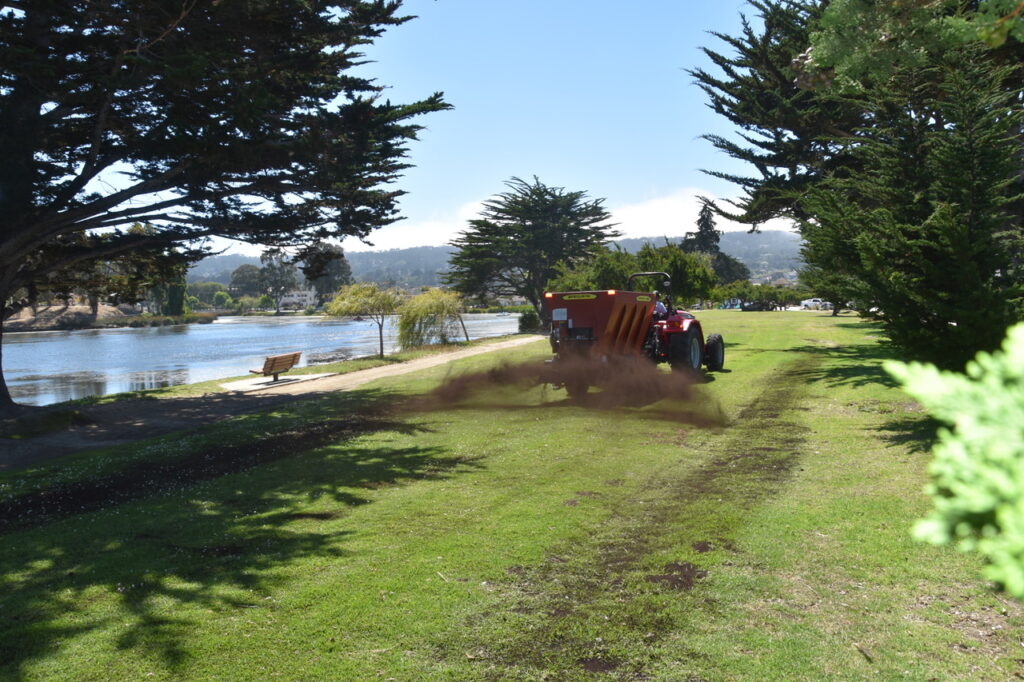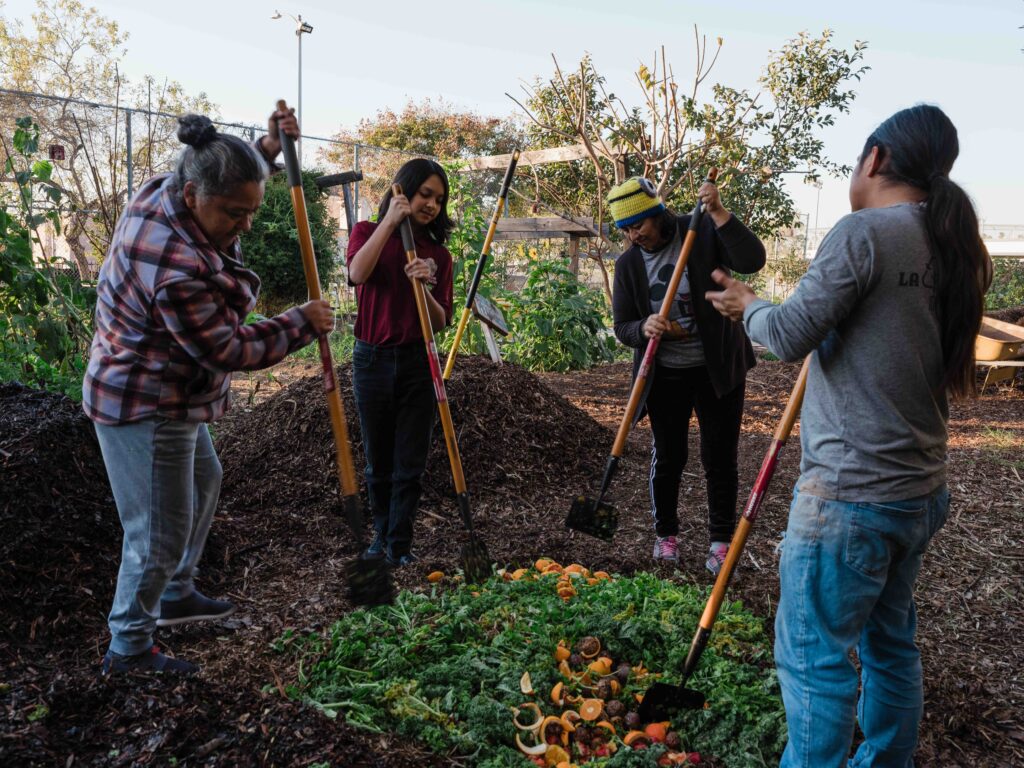Compost is a tool for resilient communities
By Stephanie Cain, Associate at People, Food and Land Foundation and Andy Shrader, Senior Advisor at People, Food and Land Foundation, October 23, 2025
The gap in compost planning
As a tool for climate emissions mitigation and water conservation, a growing number of planners around California have been incorporating composting efforts into local plans in recent years, a trend that has accelerated since the adoption of SB 1383 in 2022. Integrating compost-focused strategies—particularly those that promote community-scale composting and compost application projects—into General Plans and Climate Action Plans can create powerful pathways to strengthening local resilience, expanding access to sustainable resources, and driving community transformation.
A recent review (PFL, 2025) of all the general plans (GPs) and climate action plans (CAPs) in the state found that:
- 54% of city and 62% of county GPs mention compost in at least one of their strategies.
- 83% of city CAPs and 90% of county CAPs mention compost.
However, the majority of these plans predominantly mention compost only within the context of waste diversion, with strategies such as “divert organic materials from landfills through composting.”
- Only 10% of city GPs and 22% of county GPs mention any strategy for applying compost onto public or private lands.
Climate action plans, despite having more frequent mention of compost and more holistic strategies, maintain a similar divide where most focus on waste management and gloss over compost application. This presents a huge gap in opportunity.

The multifaceted benefits of compost
There are many compelling reasons to consider adding compost to the soils in your jurisdiction. Community composting is particularly valuable as it allows for a closed-loop system that combines both diversion and application in one location. Community composting operations can range from a three-binned collection system for a single neighborhood to an in-park facility processing food waste from local businesses.
Compost helps soils hold more water
Applying compost to land improves soil health and structure by returning carbon and nutrients to the soil ecosystem.
- This improved structure is significantly better at retaining water, supporting a wide range of hazard mitigation and climate resilience projects.
- When the soil holds more water, it filters out contaminants, leading to cleaner streams and waterways.
- More water filters deeper into the ground, recharging the state’s at-risk groundwater supply.
- In this way, compost helps create “sponge cities” and thereby improves the landscape’s ability to absorb, slow, and manage rainwater to prevent flooding and erosion.

Compost helps green and cool urban spaces
When applied to parks, community gardens, or other green spaces, compost is a key ingredient in the fight against urban heat island effect. These same spaces can also be used to create compost at a small or medium scale.
- Community composting sites create accessible and equitable spaces, often coupled with small-scale food production and native plant gardens.
- Community composters serve their local communities by creating a closed loop and maintaining soil in public or semi-public green spaces, remediating contaminated urban soil, and supporting the planting of native trees and plants.

Composting Supports Youth Development and Community Projects
Community composting provides numerous social benefits beyond simply creating compost. These include educational programming, food production, and youth workforce development. The benefits of each site are often molded by and respond to the surrounding community’s needs.
Leveraging Compost for Regulatory Compliance, (Including SB 1383)
Planning for compost application projects and new community composting sites not only helps a jurisdiction comply with SB 1383 requirements, and it can also be used to comply with other State mandates focused on equity, conservation, and climate resilience.
- SB 1425 requires jurisdictions to update the open-space element of their general plans to consider equitable access to open space, climate resilience, and rewilding opportunities. The bill – whose state-mandated implementation is due extremely soon, on January 1, 2026, – presents a clear way to link compost to equity and climate resilience initiatives. For one example, the bill calls for urban greening and access to open space in historically underrepresented communities. Building community composting sites is an excellent avenue to create inviting and accessible outdoor spaces that can simultaneously benefit neighborhoods that have long been excluded from outdoor education and safe outdoor spaces. For another, applying compost to open spaces supports many hazard mitigation efforts, particularly those surrounding water, heat, and extreme weather events.
- AB 1889 requires jurisdictions to update their general plan’s conservation element by January 1, 2028, to consider wildlife connectivity — another opportunity for rewilding and greening initiatives that compost could support. Compost could be applied to support conservation efforts such as roadside native plantings and riparian restoration projects, which provides a slow release of stable nutrients unlike synthetic fertilizers that can promote algae and invasive plant booms.
- AB 2346 authorizes local jurisdictions to count compost produced at community sites towards their organic waste procurement targets, providing a valuable opportunity to support new community composting sites. It also allows procurement dollars to be used towards the infrastructure needed to open new community composting sites.
- SB 279, recently signed by the Governor, eases permitting for community composters, urban farms, and school farms by allowing them to compost larger amounts of green waste onsite.
- SB 1383 procurement requirements can also be used to catalyze nature-based climate solutions projects, such as native tree and plant cultivation, as well as compost applications on open spaces and rangelands — a practice shown to draw carbon into the soil (aka, sequestration).
Concluding thoughts
While diverting organic waste from landfills is critical from a climate perspective — and demand for compost in the agriculture sector is high — diversion-only strategies can limit the use and development of compost as a resource within local jurisdictions. Cities can help to create strong and lasting compost markets by producing or purchasing compost for use in green spaces, medians, and other places where shade trees and other plants can benefit from healthier soil. With a little focus and creativity, compost can create a host of economic and workforce opportunities across the state and beyond. This makes compost the ultimate tool for planners wishing to support their communities to be healthier, more resilient, and more equitable.
For more information, access to additional resources, or to leave feedback, please email stephanie@pflfoundation.org
